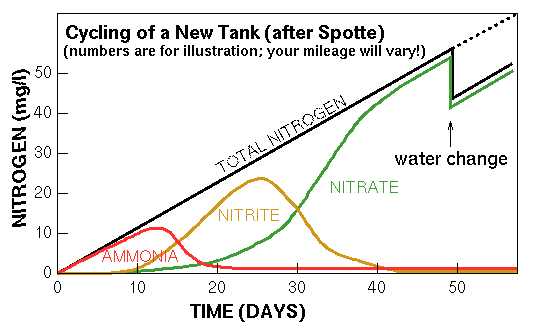For a start, acid water does not allow the presence of ammonia (NH3) and any ammonia in a non cycled acid water tank can only occur in the form of ammonium (NH4). AmmoniUM, is much less toxic than ammonIA and can be tolerated by even sensitive fish in much higher concentrations than ammonIA.
Taking this into consideration, one might ask, then why, is a biofilter important in an acid water aquarium if ammonium is so innocuous.
Well, did I say it was innocuous? No, I said it can be tolerated in higher concentrations than ammonia. And altum, are among those species, who will react even to relatively small amounts of ammonium. This reaction will be slower (compared to the ammonia reaction), and the fish will look stressed, darker, show a decreased interest in food, and eventually become symptomatic in one way or another.
In short, yes, we need our biofilters to take care of this issue.......
But the problem is that at the acid pH I recommend for keeping altum (4.5 to 5.5 range), the biofilter will not cycle thoroughly or quickly, sometimes not at all, given reasonable time.
This is because when you add nitrifying bacteria cultures to a moderately acid aquarium, most of the culture dies on contact with the water or a very short time thereafter.
So what can we do to cycle a biofilter for our blackwater, quite acid, very soft watered, altum tank?

 I had a major blip in the middle of my cycle too where my motor on my filter stopped working! Luckily the bacteria didnt die! Thought I might have had to start from scratch - would not have been happy in the slightest.
I had a major blip in the middle of my cycle too where my motor on my filter stopped working! Luckily the bacteria didnt die! Thought I might have had to start from scratch - would not have been happy in the slightest. 
 /scholar.googl...o=2000&as_vis=0
/scholar.googl...o=2000&as_vis=0
